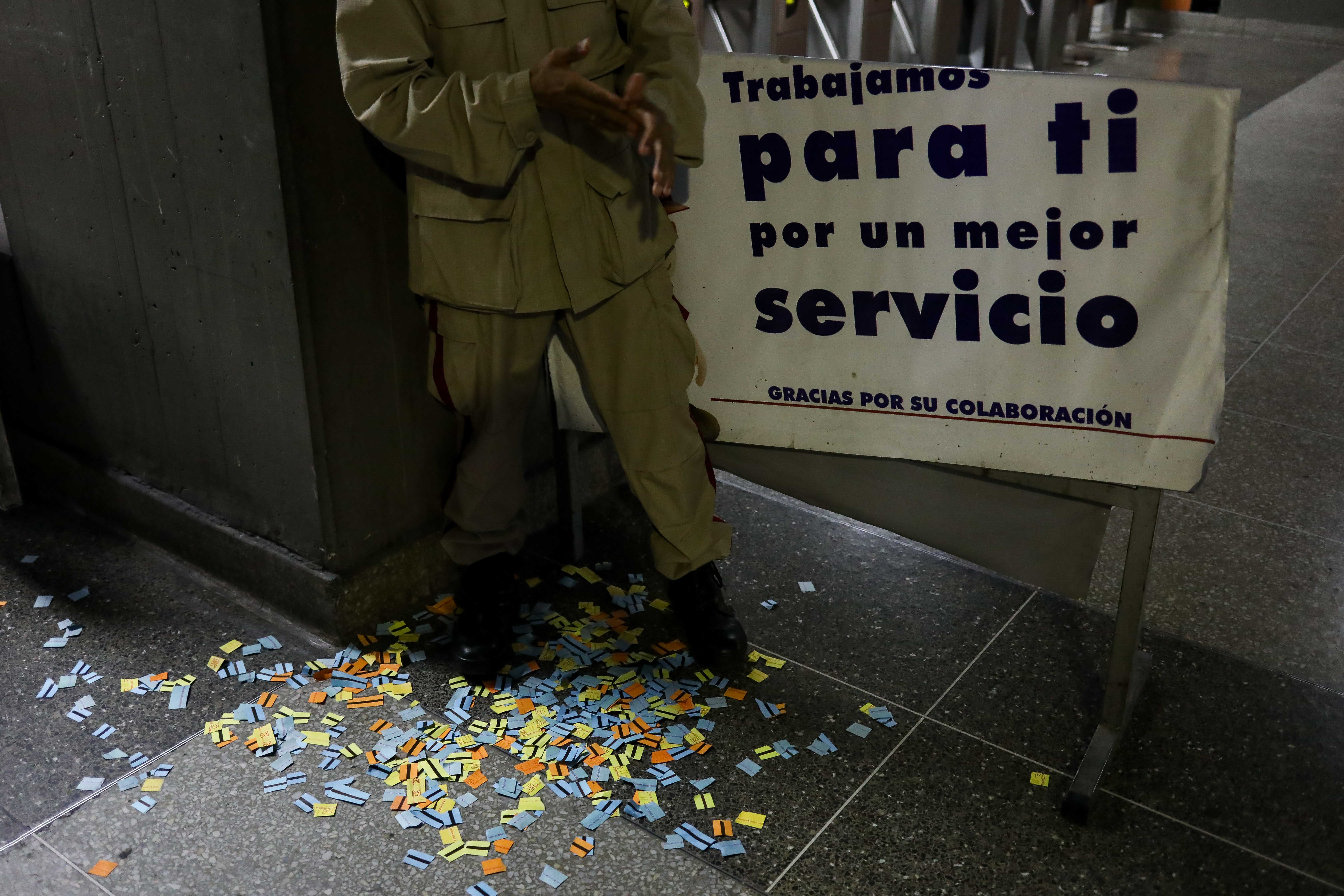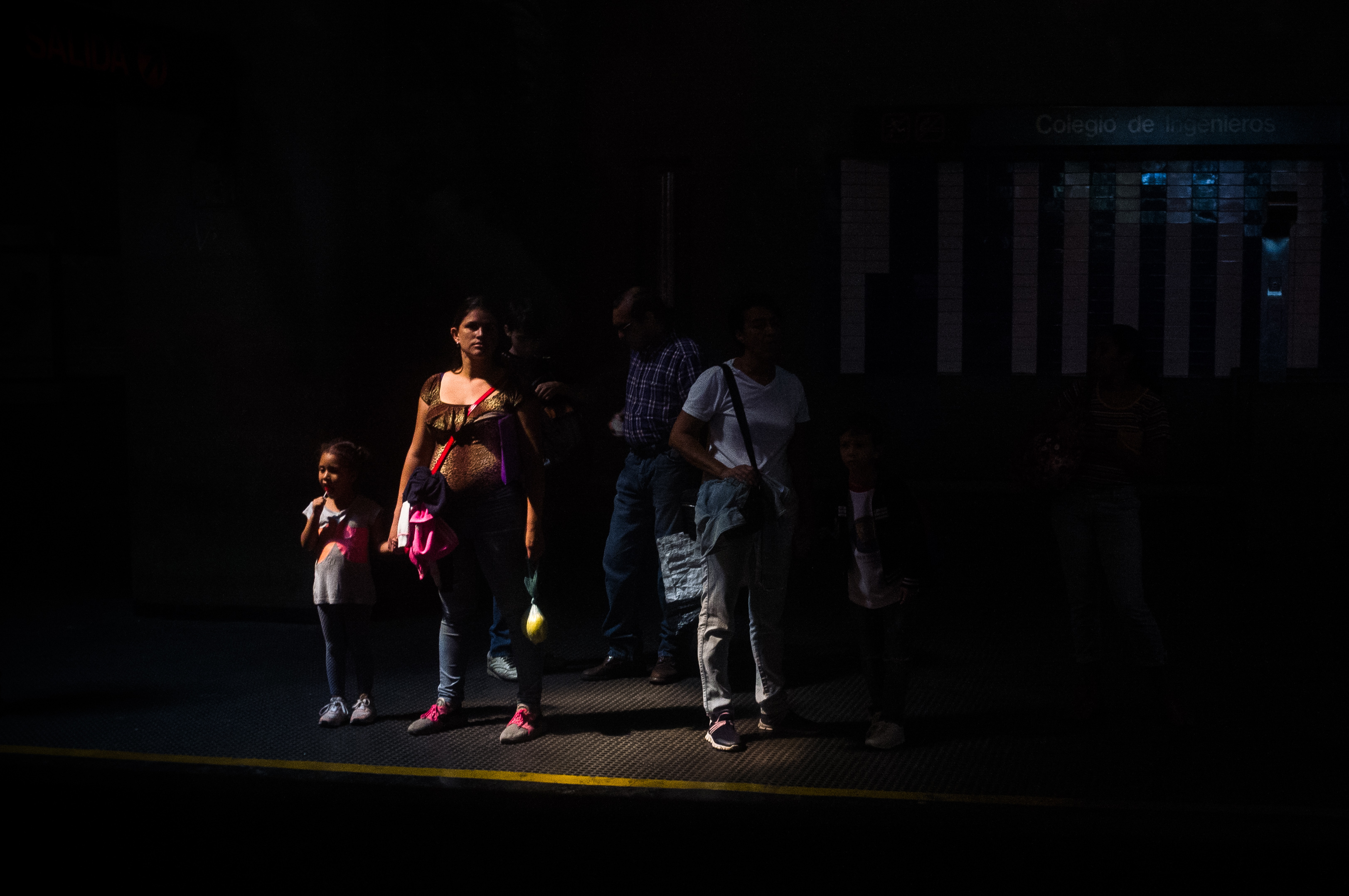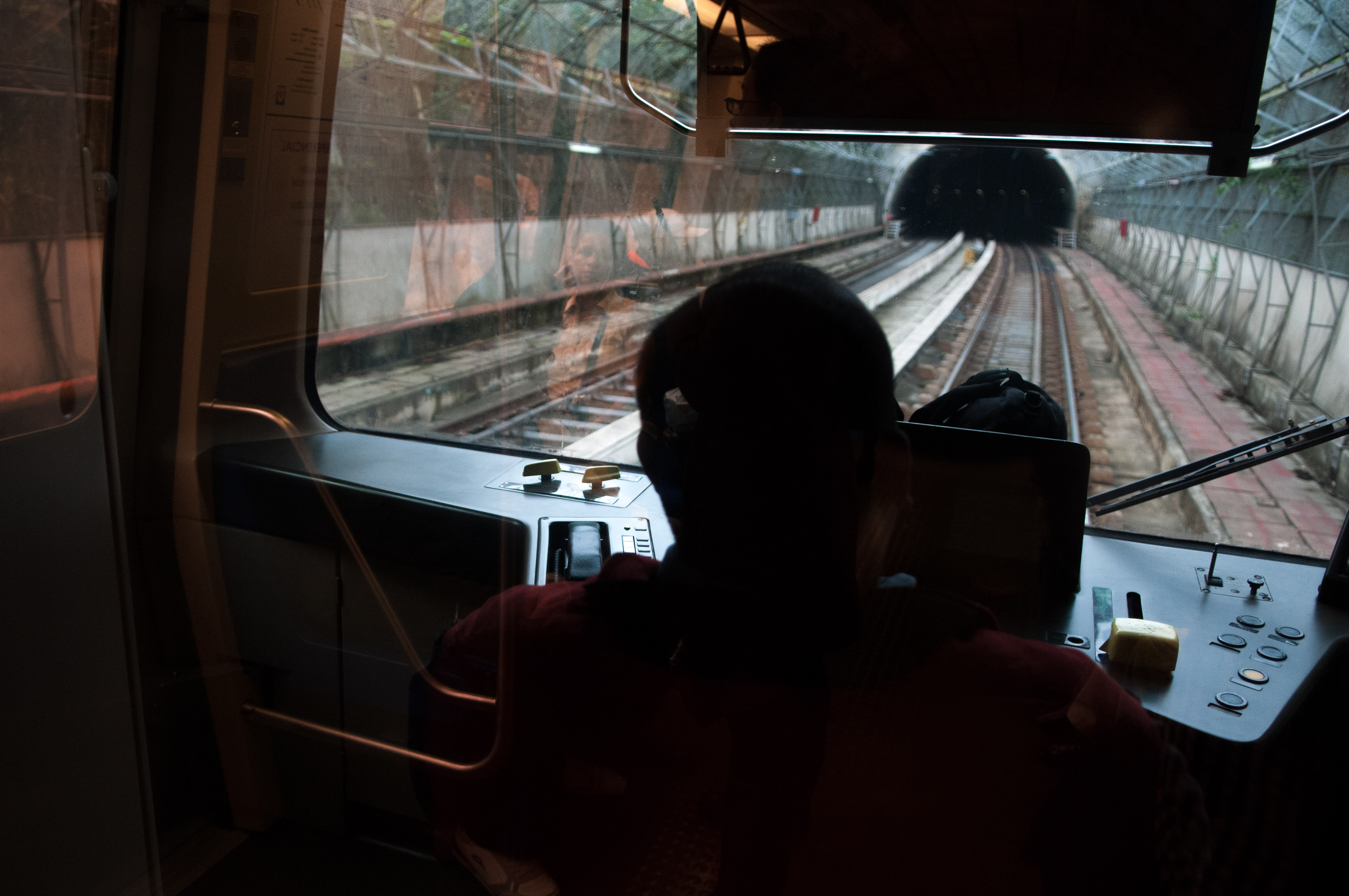The ‘Great Solution for Caracas’ Became a Huge Problem
The Caracas Metro is in a state of technical shutdown: it can’t satisfy the most basic needs of its users. How ruined is what once was our capital’s pride?


Photos: Cristian Hernández
While Antonio makes his way through the long stairway to the Bello Monte subway station, two men carry a young woman in a wheelchair who glances with melancholy at the dead mechanical stairs. On the platform, a voice says that tickets are 40 bolivars ($0.002 cents at that day’s rate) but nobody pays for them, because even though the Caracas subway is only free for senior citizens, turnstiles are open for everyone.
After waiting 30 minutes and resisting the stench of piss, the train arrives and —despite the hassle— Antonio makes it inside. Chairs and walls are covered in graffiti. The floor is dirty. In Plaza Venezuela station, he watches three trains go by before he’s able to board one. A girl complains that someone touched her, an old lady complains about the pushing, a boy cries while his mother warns him that if he lets go, he’ll get lost, while people on the train are doing everything they can to get out. On his way to Capitolio station, Antonio unboards, hoping to catch another train with air conditioning. The mission fails.
When he grabs his phone to text, he’s paralyzed by the sight of a young staring at it. He puts the device away and stands by the door, and in the next station he switches to another car. Finally at Capitolio, he leaves the station thinking of how, in a few hours, after he’s done running his errands, he’ll have to take the Metro again.

La Hoyada Station, where the militia give access to users. Photo: Cristian Hernández, Caracas, 2019.
Crime and Vandalism
Antonio, who asked to remain anonymous because he works at a government ministry, is one of two million users that endure the perils of the Caracas Metro every day.
José Emilio lives in La California, a neighborhood in east Caracas. He has a scar from the palm of his hand to his forearm. “Six months ago, I was exiting the Los Cortijos station. I walked up the stairs, and when I was on the street I pulled my phone out. ‘Gimme your phone,’ said a man who came out of nowhere. I refused and he pulled out a knife. I instinctively raised my arms to protect myself and he cut me, slashed my tendons. I can’t move my fingers. I have to do physical therapy and I can’t work. It happened at 2:00 p.m.”
Crime affects users and the facilities, and the subway’s art collection. In Chacaíto, one of the 13 pieces that composed Caleidoscopio, a sculpture by Beatriz Blanco, was stolen. The base of Desplazamiento perforado by Víctor Valera, in the Parque Miranda station, is full of graffiti. At least 13 other pieces have been vandalized, and they remain that way.
There’s no more training for police officers to guarantee the safety of citizens or of the operations, explains engineer Ricardo Sansone, coordinator of Familiametro, who worked in the system as station inspector for 22 years. “The Metropolitan Police created a specific unit for the Metro. Now the PNB sends officers to guard it, but the crimes here are different from those on the street.”

Colegio de Ingenieros Station. In Caracas, two million users endure the perils of the Caracas Metro every day. Photo: Cristian Hernández, 2019.
State of Collapse
Sansone thinks that the catastrophic state of the subway is a result of the lack of public policies and resources to cover the system’s minimum requirements.
Out of 126 trains, only 30% work;
Out of 778 turnstiles, 336 work;
Out of 321 mechanical stairs, 30% work.
“Line 1 has been working for 36 years,” Sansone explains. “The equipment should have been updated for wear and tear. They’re coming into their period of obsolescence and there are no parts because suppliers weren’t paid. The same goes for Line 2.”
In 2008, Metro de Caracas signed a contract with Spanish company UTE-CSM to rehabilitate Line 1. The contract included the renovation of tracks, the energy system for train traction, auxiliary power, emergency power system and train control. In the end, the only part of the contract that pulled through was the purchase of 48 trains, without the training that went with it. “They missed on the opportunity of changing and knowing the technology. The contract didn’t include the first shipment of parts and they didn’t pay the agreed amount, so communication was broken.”
For Sansone, this is a technical shutdown. “In transportation engineering terms, it’s such a terrible decline of the service that, no matter how large the effort is, it’s not enough to take the activities back to original design levels nor to cover the users’ needs.” The lack of resources has caused the paralysis of the projects, construction, and equipment divisions. “They don’t do anything. What are they going to do, if there’s no money?”

The Metro was built, for the most part, between 11 to 22 meters under rivers and creeks that may be at the same depth as the tunnels. This water can filter into the Metro system if the established procedures aren’t followed. Photo: Cristian Hernández, Caracas, 2019.
A Flood Underground
The Metro was built, for the most part, between 11 to 22 meters under rivers and creeks that may be at the same depth as the tunnels. This water can filter into the Metro system if the established procedures aren’t followed. “Water that gets into the tunnels is taken to different wells throughout the tracks, where it’s pumped to the Acueducto Metropolitano de Caracas pipe system,” explains Sansone.
But because of poor maintenance and accumulated garbage, most of these wells don’t work properly, so the water floods the tunnels and they have to block them while maintenance pumps the water out. When this isn’t done immediately and complying with procedures, you get scenarios like what happened during the March blackout: several tracks between Chacaíto and Miranda flooded.
Under Other Cities
The lack of experience is another problem. “Many of the Metro’s pioneers started retiring in 2011 and they didn’t train new personnel, a situation that got worse with migration, because salaries don’t cover workers’ expectations or needs. In Chile and Panama, they’ve recruited personnel from the Caracas Metro. Only in Chile there’s 56 of us,” said Sansone.
“Many people have left because of the salaries,” says María Antonieta (her name has been changed,) who works in the management division. “So many people are leaving that the Metro doesn’t accept resignations anymore. Many workers leave anyway, without their money, because it represents very little. Offices have no personnel.” She says that the situation got worse after 2018, because the collective bargaining agreement hasn’t been complied with. It established increasing salaries by 20 % every two months and 40 % after the contract ended, after two years. “Never again did we see those benefits, they don’t give benefits for children either. No summer day camp or bonus for the start of the school year.”
Luis (who also asked us to protect his name), former train operator, says from Chile that “politics ruined the Metro.” For 25 years he worked in Cametro, where he was a station, equipment and train operator, supervisor and traffic controller. “I started working in the subway in June 1995, I had just graduated from high school. I got training, theoretical and practical, for all the jobs I had. You had to be competent to work in the system. My last position was as traffic controller, which represents the main axis of the company. My partners and I saw and monitored the three lines that composed Cametro back then. We had to develop strategies and make effective, quick decisions. In the Metro de Caracas not only did I learn my craft, they taught me how to be a responsible, committed worker and a fair person.”
Luis says that the training and supervising protocols stopped being a priority for the managers of the system, which negatively impacted its operation. “When chavismo took power, there were changes in management and most of those new hires didn’t know what to do or even why they were there. Those in high ranks started putting political and even personal interests first, and the quality of the service dropped. Members of the union stopped defending workers.”
The former Metro supervisor says that, with his wages, he could buy an apartment and a car. “Today I couldn’t even buy groceries. A traffic controller earns a basic salary, 100,000 bolivars ($5 approx.). What can you buy with that?” He now works as an electrician for Alstom, the French corporation that made the Metro’s old silver trains. “They’re a contractor for the Metro de Santiago. I make around $500 a month. I can cover my basic needs and protect my family. I’m not in my country, but I’ve been treated well here.”
Caracas Chronicles is 100% reader-supported.
We’ve been able to hang on for 22 years in one of the craziest media landscapes in the world. We’ve seen different media outlets in Venezuela (and abroad) closing shop, something we’re looking to avoid at all costs. Your collaboration goes a long way in helping us weather the storm.
Donate




